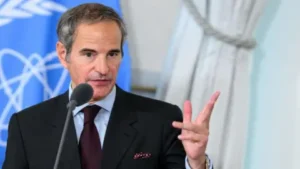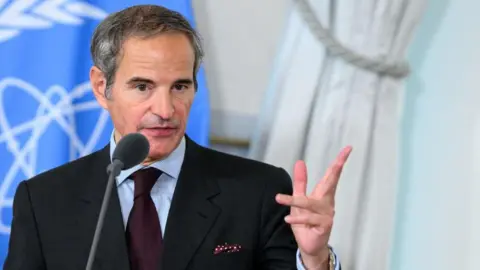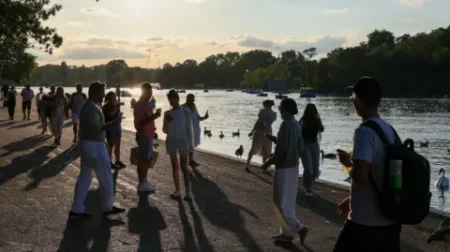In a recent alarming statement, Rafael Grossi, the director general of the International Atomic Energy Agency (IAEA), warned that Iran possesses the capability to initiate uranium enrichment for nuclear armament purposes within a matter of months. His remarks underscore the serious implications following recent military actions taken by the United States against Iranian nuclear facilities.
Grossi emphasized that, contrary to former President Donald Trump’s assertions that Iran’s nuclear facilities had been “totally obliterated,” the damage incurred during targeted strikes on Iranian sites was severe but not comprehensive. The US launched these attacks alongside Israel, focusing on key nuclear facilities located at Fordo, Natanz, and Isfahan on June 13. Grossi pointed out that it would be false to claim that all capabilities had been lost; in fact, the potential for Iran to restart enrichment activities remains intact.
Following the attacks, the situation has escalated, creating a climate of uncertainty surrounding Iran’s nuclear ambitions. Grossi reiterated that if Iran decides to proceed, it could soon have “a few cascades of centrifuges spinning and producing enriched uranium,” reflecting a critical moment in global nuclear non-proliferation efforts. He cited that Iran continues to maintain both the industrial capacity and technological expertise necessary for uranium enrichment, vowing that should they choose, they could reignite their nuclear program at will.
During a recent interview with CBS News, a media partner of the BBC, Grossi revealed that the IAEA’s assessment was echoed by US Pentagon intelligence, which concluded that the recent military strikes would only postpone Iran’s nuclear ambitions by a few months. In stark contrast, Trump maintained a blustering rhetoric, claiming that the strikes had resulted in Iran’s nuclear sites being completely destroyed and criticized the media for undermining what he called a significant military success.
As domestic sentiment in Iran fluctuates, the nation has concurrently insisted that its nuclear program is solely for peaceful purposes. However, Iran’s Supreme Leader Ayatollah Ali Khamenei described the military strikes as having caused no significant consequences, while Foreign Minister Abbas Araghchi provided a conflicting account, stating the damage was both extensive and severe.
The uneasy ceasefire between Iran and Israel, following the strikes, has not alleviated the tensions. There’s a growing concern, especially from Trump and other American officials, that Iran may still aspire to develop nuclear weapons. Trump has openly indicated that he would consider significant military retaliation if future intelligence suggests Iran is on the brink of enrichment levels that could lead to bomb production.
In recent weeks, Iran’s parliament has even deliberated on suspending collaboration with the IAEA, accusing the agency of partiality toward Western powers, mainly the US and Israel. This fracture in relations was exacerbated after a recent IAEA report indicated that Iran was in violation of its non-proliferation obligations for the first time in two decades.
The complexity of the situation is highlighted further by the fact that under the 2015 nuclear agreement with world powers, Iran was restricted to uranium enrichment levels of 3.67% purity—adequate for nuclear power generation but far below the levels needed for weaponization. The onset of the Trump administration’s withdrawal from this deal in 2018 led to the reinstatement of severe US sanctions, which Iran retaliated against by progressively breaching the degree of limitations set forth in the agreement. At current estimates, Iran has gathered enough uranium enriched to 60% purity which, according to the IAEA, might be sufficient for creating up to nine nuclear warheads.
In conclusion, the volatility surrounding Iran’s nuclear capabilities raises pressing global security concerns. As Rafael Grossi continues to advocate for diplomatic solutions even in the face of Iran’s reluctance to cooperate, it becomes evident that a multi-faceted approach—including strategic communication and negotiations—is essential for achieving a lasting resolution to these escalating tensions. The time is critical, as the world watches Iran’s next moves with apprehension and hope for a peaceful resolution.











